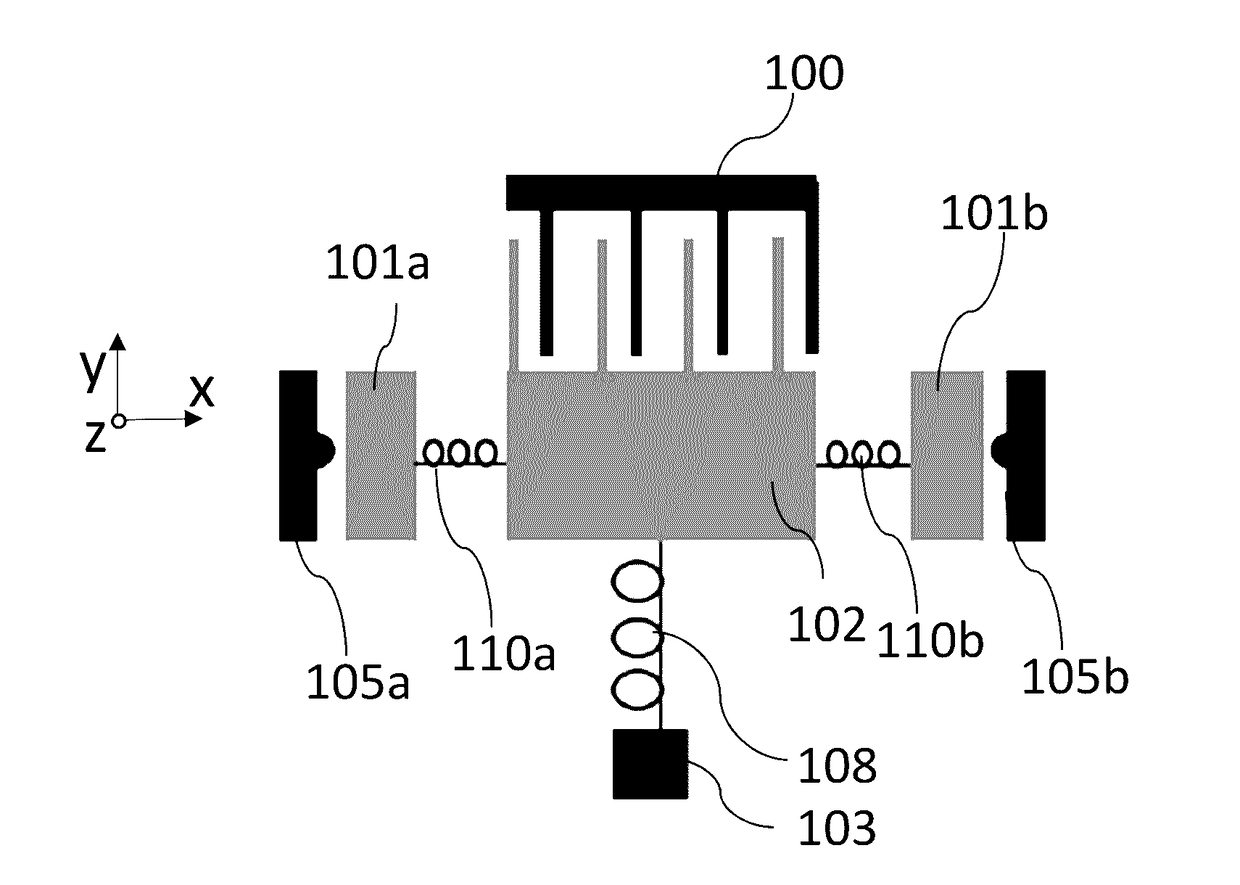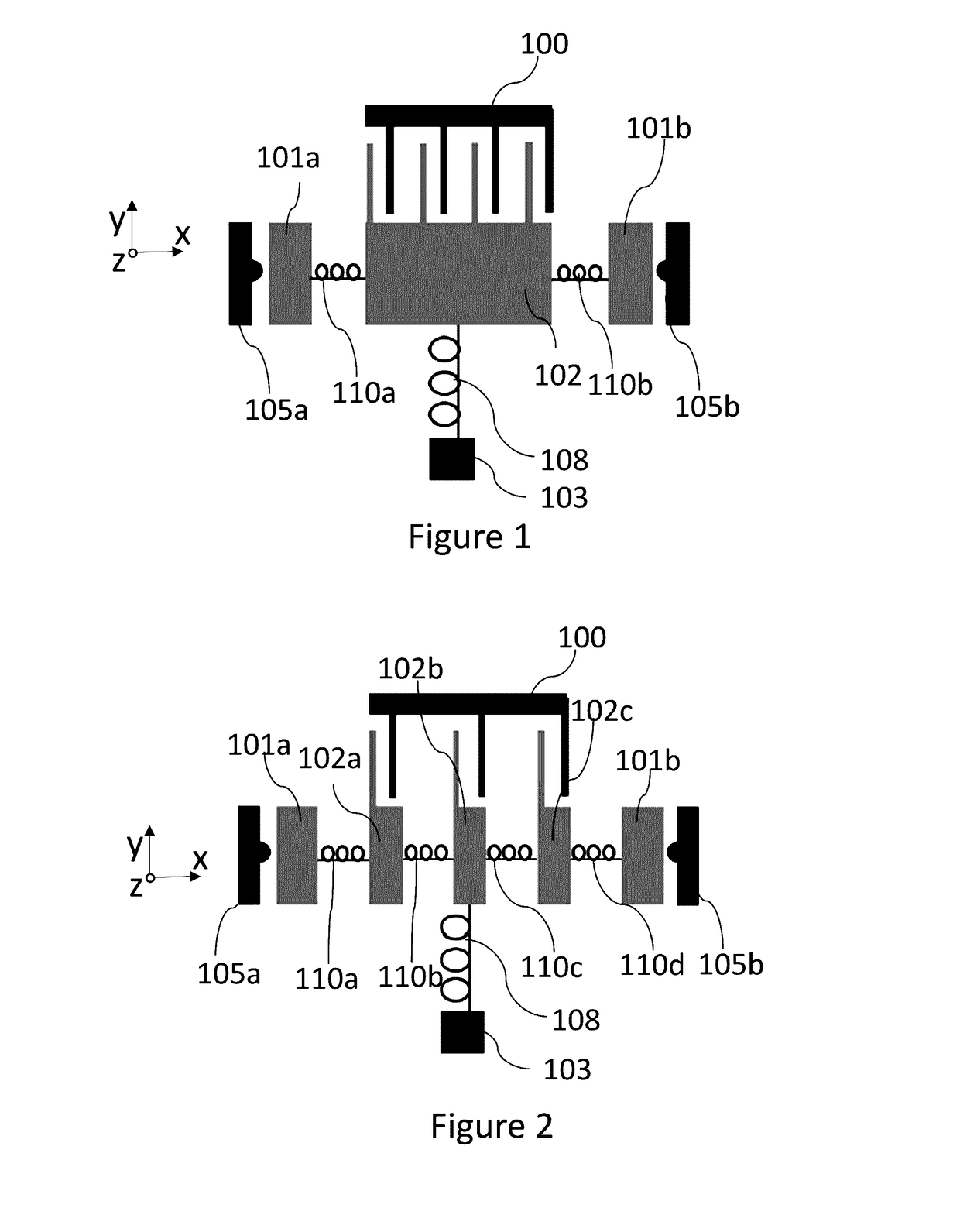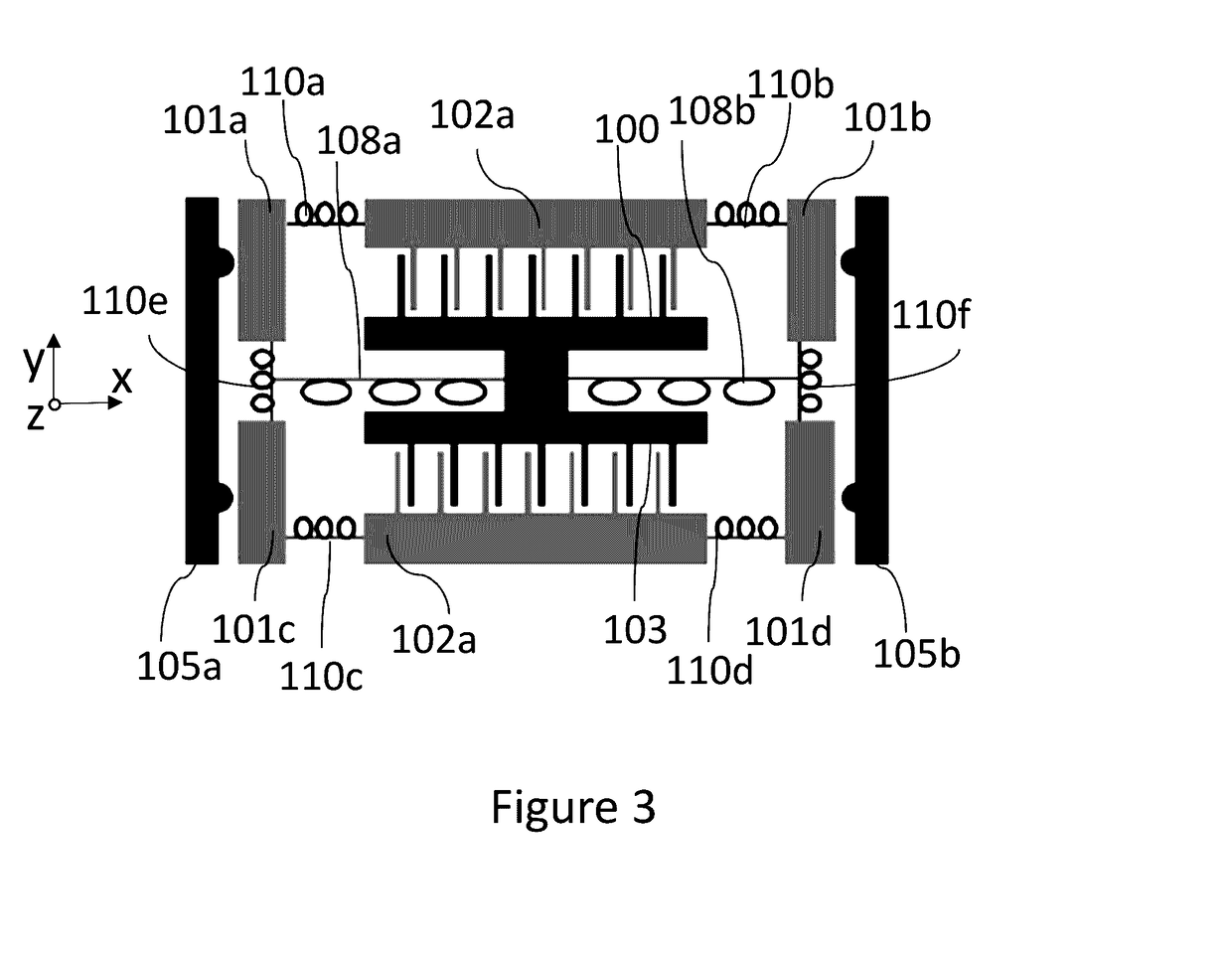Semi-flexible proof-mass
a micro-mechanical device and mass technology, applied in the direction of flexible micro-structural devices, structural/machine measurement, instruments, etc., can solve the problems of stiction, cracking or fracture of mems structures, and breaking of structures, so as to prevent sticking, prevent cracking or fracture effectively, and the manufacturing process is relatively simple.
- Summary
- Abstract
- Description
- Claims
- Application Information
AI Technical Summary
Benefits of technology
Problems solved by technology
Method used
Image
Examples
Embodiment Construction
[0044]A MEMS device may comprise a substrate layer and a functional layer suspended above the substrate layer. Fixed or stationary structures of the functional layer are suspended above the substrate layer, and movable structures of the functional layer are movably suspended above the substrate layer. Example of movable structures of a MEMS device are movable masses such as a proof-mass, springs and moving fingers electrode combs.
[0045]A spring in a MEMS device may be considered as a suspension structure that constrains motion of the suspended structure in defined dimensions. Springs may have varying form depending on the functionality they are intended to. A rectilinear beam may act as a spring, and dimensions of the beam define the characteristics of the spring. A MEMS spring may comprise two or more rectilinear sections, forming a fold, crab leg, a U-shape or a serpentine, for example. FIGS. 1 to 3 illustrate functionality of springs in functional manner only, i.e. the physical f...
PUM
 Login to View More
Login to View More Abstract
Description
Claims
Application Information
 Login to View More
Login to View More - R&D
- Intellectual Property
- Life Sciences
- Materials
- Tech Scout
- Unparalleled Data Quality
- Higher Quality Content
- 60% Fewer Hallucinations
Browse by: Latest US Patents, China's latest patents, Technical Efficacy Thesaurus, Application Domain, Technology Topic, Popular Technical Reports.
© 2025 PatSnap. All rights reserved.Legal|Privacy policy|Modern Slavery Act Transparency Statement|Sitemap|About US| Contact US: help@patsnap.com



